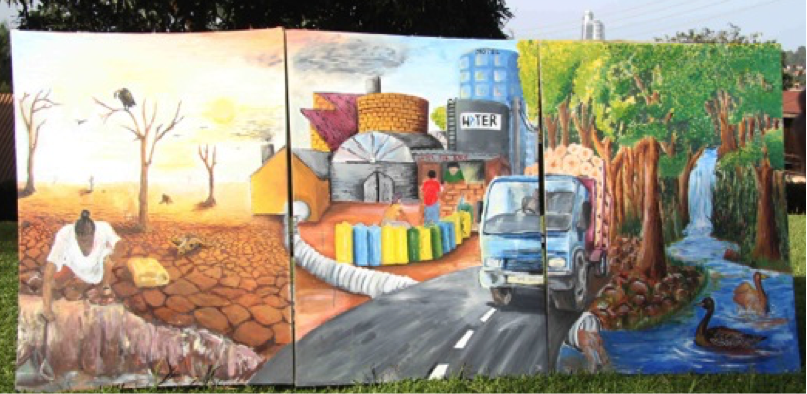Migration is part of human history; the current human geography of Africa can be traced back to movements made centuries ago. In Uganda, different ethnic groups, including the Bantu, Hamites, Nilotics and Nilo-hamites, all entered the country from different places in response to a variety of circumstances, including drought, infertile soils, and depleted livestock pastures.
The challenge for the farmers and pastoralists affected now, as well as for those anticipating climate change impacts, is how to adapt successfully in order to become more resilient and attain income- and food-secure livelihood activities.
Migration is part of human history; the current human geography of Africa can be traced back to movements made centuries ago. In Uganda, different ethnic groups, including the Bantu, Hamites, Nilotics and Nilo-hamites, all entered the country from different places in response to a variety of circumstances, including drought, infertile soils, and depleted livestock pastures.

The challenge for the farmers and pastoralists affected now, as well as for those anticipating climate change impacts, is how to adapt successfully in order to become more resilient and attain income- and food-secure livelihood activities.
Migration as adaptation measure
At its root, adaptation means, “to become adjusted to new conditions.” This may mean seeking out more conducive conditions rather than changing one’s physical capacities in order to suit the surrounding environment. Moving yourself rather than changing what you are or what you do can be an effective way to adapt.

For people, the greatest driver may be belief in the possibility of a better life – the ‘grass is greener’ syndrome. This is perhaps especially the case for those whose livelihood depends on a sector where the outlook is particularly bleak, such as for farmers and pastoralists anticipating the impacts of climate change.
Climate change and migration ages agriculture in Uganda
Uganda is a good case in point. The country had the 2nd highest fertility rate in the world in 2002. With 78% of the population younger than 30 years of age, Uganda is the second youngest population in the world after Niger. However, with the unemployment rate for young people between 15 - 24 years at 83%, Uganda has the highest dependency ratio at 103%.
At the same time, contrary to popular belief, the majority of youth is interested in agriculture and ag-enterprise development but lack the resources to break into the sector.
Climate change heightens the need for the right support and input provision, not least because it adds a major disincentive to engage in the sector if it is seen as risky. Specific challenges include perceived increases in the cost of investment in agriculture, from the need to purchase drought resistant seeds, to the introduction of irrigation facilities to iron out rainfall anomalies, and measures to reduce losses due to pest infestation.
All these factors can be seen to have contributed to making agriculture less attractive or affordable to youth. The net effect is that, although the population is very young, the average age of a Ugandan farmer is 54 years. The lure of work in urban areas remains strong for youth.
Among the “millennials,” exposure through technology to what exists beyond Ugandan borders may also lead them to migrate out of their own country. Many migrate over great distances and via risky, sometimes informal routes. The chief lure is wage labor and being able to partake in an international cash economy.
Making agriculture more appealing to youth
The question is whether there is a way to respond to young people’s apparent interest in agriculture and curb migration trends in a way that is economically viable. The key emerging issues include understanding why some stay, and what makes others leave. If youth do leave, what is the difference in experiences, both at origin (e.g. with the migrant’s family) and at the destination?
It is also important to look at the incentives of governments in addition to those of individuals. Doing so will lead to a completely different approach to sector development strategies in agriculture and climate change adaptation.
In the face of such complex, interwoven challenges, the CBA11Youth Forum will be held in Kampala, Uganda on June 28th and 29th 2017. The CGIAR Research Program on Water, Land and Ecosystems (WLE), led by the International Water Management Institute (IWMI), is hoping to contribute to the identification of potential ways forward for youth in agriculture, as well as for African governments, and propose support measures.
WLE will lead a session titled “A youth agenda for sustainable agricultural transformation in an era of climate change and out-migration,” where we hope to get all relevant stakeholders talking about how to give Ugandan youth access to the agricultural sector. Stay tuned!

